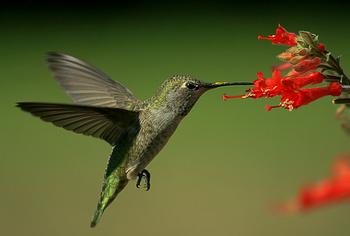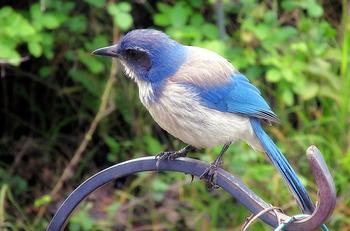Fall 2023
Winter Gardens for the Birds!
by Lorraine Frey

Believe it or not, summer will soon be coming to an end. It’s therefore time to think about the fall garden and the birds we want to see and protect through the winter First, we need to re-think fall "Cleanup".
In the garden, tolerance and aesthetic preferences vary from person to person. So, if you aren't quite ready to go 100% “au naturel” this fall, then start with just a few of the following ecosystem-boosting recommendations—you'll be surprised just how beautiful a "messy" lawn and garden can be.
1. Let’s Leave the Leaves

- Provide your lawn and garden with a protective and nutritious blanket in the winter;
- Protect insects and other animals that rely on the leaf litter for survival;
- Enrich your soil with inorganic compounds like nitrogen and phosphorus as the plant matter decomposes;
- Reduce your environmental impact by keeping the rich organic matter out of the landfill
2. Don't Overdo it with the Clippers 
A note on firesafety; brush piles can shelter birds and small mammals in the winter from predators and harsh weather. Unfortunately, we no longer recommend this practice since we live in fire-prone California. With climate change, wildfires have become a year-round threat. The same concern applies to leaving leaves and dried flowers in place for too long (after wildlife has finished feeding or sheltering). You may want to consult with your local fire department about leaving leaves on the ground and creating brush piles.
3. If you haven’t already, start Composting
Fall is the perfect time of year to start a compost pile. The readily available mix of leaves (brown material), plant- and grass-clippings (green material), as well as food scraps, help produce nutritious compost quickly. Compost piles turn those old food scraps and yard waste into a gardener's black gold.
4. Provide a Water source
Feeding birds is important, and doing this naturally is always better. Native flowering and berry-producing plants & shrubs are bird-friendly. Try to plant year-round food sources for your birds. Sunflowers, hollyhocks, coneflowers, sages, and berry-producing shrubs and trees (such as mountain ash, sumac, pyracantha, juniper, and hawthorne coneflowers, to name a few) will lure more birds to your backyard.
Just a few additions and subtractions to your fall gardening routine can make a world of difference for birds, critters, and other wildlife. Doing so is vital to the health and beauty of our planet. Enjoy creating those habitats, both above and below the soil!
References:
Composting is Good for Your Garden and the Environment
Mt. Diablo Audubon Society
To Help Birds This Winter, Go Easy on Fall Yard Work
(The National Audubon Society)
Native Plants that Attract Birds to Your Garden
Regional Parks Botanic Garden, East Bay Regional Park District
Previous NtGB article: Creating a Wildlife Habitat:
https://ccmg.ucanr.edu/News_to_Grow_By/?story=2461
